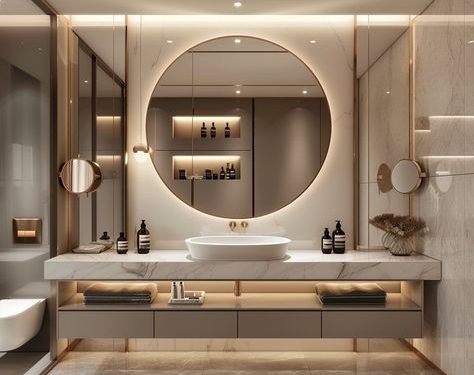The bathroom vanity is a crucial component of any bathroom design. It provides storage space for toiletries, towels, and other bathroom essentials, and it also plays a significant role in the overall aesthetics of the bathroom. With so many factors to consider, choosing the right bathroom vanity can be overwhelming. But fear not! This comprehensive guide will equip you with all the knowledge you need to make an informed decision.
Step 1: Consider Your Needs
Before you start browsing through endless catalogs of bathroom vanities, take a step back and consider your specific needs. Here are some key questions to ask yourself:
- How much storage space do you need? Do you have a lot of toiletries and bathroom essentials? If so, you’ll need a vanity with plenty of drawers and cabinets.
- How many sinks do you need? A single sink vanity is sufficient for a small bathroom or a powder room. However, if you share your bathroom with others, a double sink vanity might be more practical.
- What is the size of your bathroom? You need to choose a vanity that fits comfortably in your bathroom without making it feel cramped. Measure your bathroom space carefully before you start shopping.
Step 2: Think About Style
Once you’ve considered your needs, it’s time to start thinking about style. Bathroom vanities come in a wide variety of styles, from traditional to modern to contemporary. Consider the overall style of your bathroom and choose a vanity that complements it.
- Traditional vanities are typically made of wood and feature classic design elements such as raised panel doors and brushed nickel hardware.
- Modern vanities are often characterized by clean lines, sleek finishes, and minimalist hardware.
- Contemporary vanities are a blend of traditional and modern styles. They may feature clean lines with some decorative details.
Step 3: Choose the Right Material
Bathroom vanities are made from a variety of materials, each with its own advantages and disadvantages. Here are some of the most common materials to consider:
- Wood: Wood vanities are classic and timeless. They come in a variety of finishes to suit any style. However, wood can be susceptible to water damage if not properly sealed.
- Laminate: Laminate vanities are a more affordable option than wood. They are also resistant to moisture and scratches. However, laminate may not look as high-end as wood.
- Stone: Stone vanities, such as granite or marble, add a touch of luxury to the bathroom. They are very durable and easy to clean. However, stone vanities can be quite expensive.
Step 4: Don’t Forget the Countertop
The countertop is another important element to consider when choosing a bathroom vanity nz. The countertop material should be durable, easy to clean, and resistant to moisture. Popular countertop materials include:
- Granite: Granite is a classic and timeless countertop material. It is very durable and easy to clean. However, granite can be quite expensive.
- Quartz: Quartz is a non-porous material that is resistant to stains and scratches. It is also available in a wide variety of colors and styles.
- Laminate: Laminate is a more affordable option than granite or quartz. It is also available in a wide variety of colors and styles. However, laminate may not be as durable as other countertop materials.
Step 5: Think About the Hardware
The hardware, such as the knobs and pulls, can also play a significant role in the overall look of your bathroom vanity. Choose hardware that complements the style of your vanity and the overall decor of your bathroom.
Bonus Tip: Consider the Height of the Vanity
The height of the vanity is an important factor to consider, especially if you have small children or tall adults in your household. The standard vanity height is 32 inches, but you can find vanities that are taller or shorter.
By following these tips, you can choose the right bathroom vanity that meets your needs, style, and budget. With a little planning, you can find a vanity that will transform your bathroom into a beautiful and functional space.







